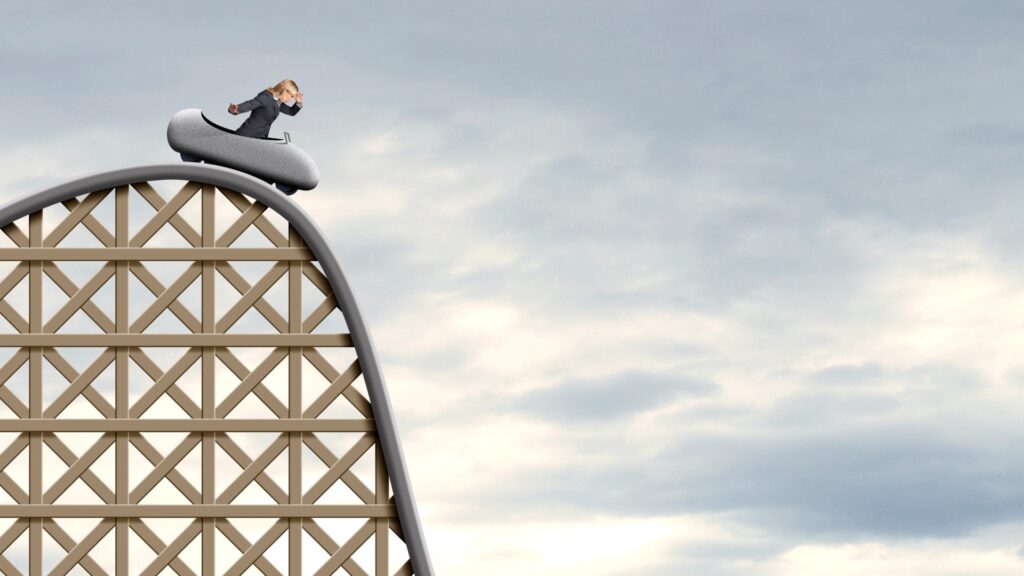You know those songs that get into your head and loop around until you think you’re actually going mad? If you want to fixate on a really sticky one, try Elton and Bernie, aka, The Captain and the Kid…
And you can’t go back
And if you try it fails
Looking up ahead I see a rusty nail
A sign hanging from it saying “Truth for sale”
When this lyrical worm gets into my brain, I find myself chanting it on the treadmill as I run, I brush my teeth to its metre, I chop vegetables whilst waving an admonishing scalpel to an invisible audience – you can’t go back…and of course I can’t go forward because I never picked up the next line of the lyric, so back round I go…
Once in a while, someone shares something with you which provides a schema for swirling thoughts to fall into place and I’m grateful for the endlessly inspirational @Kevin Bartlett for referencing Two Loops Theory enough times to make me actually go and find out what it is.
On this trail I discovered The Berkana Institute, the writings of Meg Wheatley and Deborah Frieze and I found out that the one-liner explanation of Two Loops Theory had already been doing its own loops in my head while I was brushing my teeth.
The one liner is: you can’t go back. It might continue: people try and fail…

Two Loops theory describes the cycle of change as one human system is replaced by another. In every system cycle there is a period of upswing when everything in the garden looks pretty rosy; then a subtle plateauing which is rarely noticeable but during which the seeds of decline are being sewn; and then decline sets in and the cycle slowly sinks (or rapidly crashes in the case of the Berlin Wall) towards ultimate decay. On the diagram above, which I borrow from After Now, Bob Stilger’s account of Two Loops Theory, the dark green arrow represents the momentum of decline, an accelerating gravitational pull. This much is fairly easy to understand.
What is less immediately clear is the meaning of the red arrow – but it’s red arrows that litter our current educational paradigm and, as I’m about to suggest, some of our best known institutions.
The red arrow represents the conservative reaction to change. In the face of decline, the intellectuals may call for reform but there are also many voices that call in fear for return. These voices call for the return to the golden age when life was on the up (or at least on the plateau) and times were good. Hear the voices: back to basics…the three Rs…Make America Great Again…British Values…Take back control (Vote Leave) (and you can’t go back…).
I hear this language all the time in the context of my beleaguered football club, a case study in decline for the ages. As the richest football club in the land sinks inexorably below the waves on a 10 year fairground slide down the dark green arrow, what do you hear from the pundits, the fans and the smug old legends?
“How can we get back to the glory days?” “How can we return this great club to where it belongs?” “How can we regain our position as the best club in the land?”
I hate to break it to my fellow suffering fans but, well, you can’t. And we know why, don’t we.
Because you can’t go back…and you’ve tried (for 10 years) and failed…
Education, too, clings to the sinking wreckage of narrative from the tall ships of industry and empire. There is no industry recognisable from the era when all state school systems were created to provide human fodder for the capitalist monster machines; there is no Empire (I know, I know, Zuckerberg, Musk, Bezos but their sinister empires are of the present and future, not of the past, none of them went back to found those dynasties). And yet our systems and our language cling to long dead ghosts. Standards…progress measures …accountability…schemes of work… inspection… grading… The wind blows and yet we whistle and whistle in its face to reassure ourselves that we can still make sounds.
Don’t tell me you can, you can’t grade a child.
When systems decay, those not served by the dying system, and those not deluded into thinking they can exert reverse momentum over gravity, begin to create their own solutions. They become practitioners and advocates for something new. In After Now, Stilger describes the green shoots that emerged after disaster in Japan; in Singapore, in 1965, Lee Kwan Yew crafted a road map from regional irrelevance to financial domination; in February 2012 Netflix started streaming original content when they released Lilyhammer (yes that was just 12 years ago). It will never work….oh.
In our education world, there are proliferating voices calling for change and creating change in local contexts. Two Loops Theory determines that when these voices become loud enough, they begin to attract each other’s attention, like birds calling across a forest. Each connection between the voices gives them added strength – when enough voices join together, they build the momentum for a new loop to take off.
Won’t the new education loop be utterly glorious?
I hear the birdsongs of Kevin Bartlett, Kevin House, Arnett Edwards, Daniela Vasile, Jacques Perche, Sian May, Ruth Crick, Eowyn Crisfield, Naheed Bardai, Lizzie Bray, Craig Davis, Carla Marschall, Jeff Bradley, Yong Zhao, Rebecca Warren, Chris Schrader, Peter Kenny, Joan Liu, Jacob Martin, Chris Durbin, Chris Stone, Stuart MacAlpine…so many more I’ve omitted but these are some of my birds. Their voices are a loud and intrusive chorus; their voices inspire me to sing as well. But these are just the birds that I can hear – you will hear your own birdsong and I hope you, too, are singing in the chorus.
If we want things to change, we need to do something about it. All of us. The second loop starts to take off when enough of the advocates connect. If you are an advocate – reach out to all of the birds in your forest and sing with them. Find out which doors they’re pushing against and lend your weight. Find ways to align with them, don’t compete to have the loudest voice.
We don’t all have to agree about where we’re going but we do all need to agree about one very important thing…
…we can’t go back.





